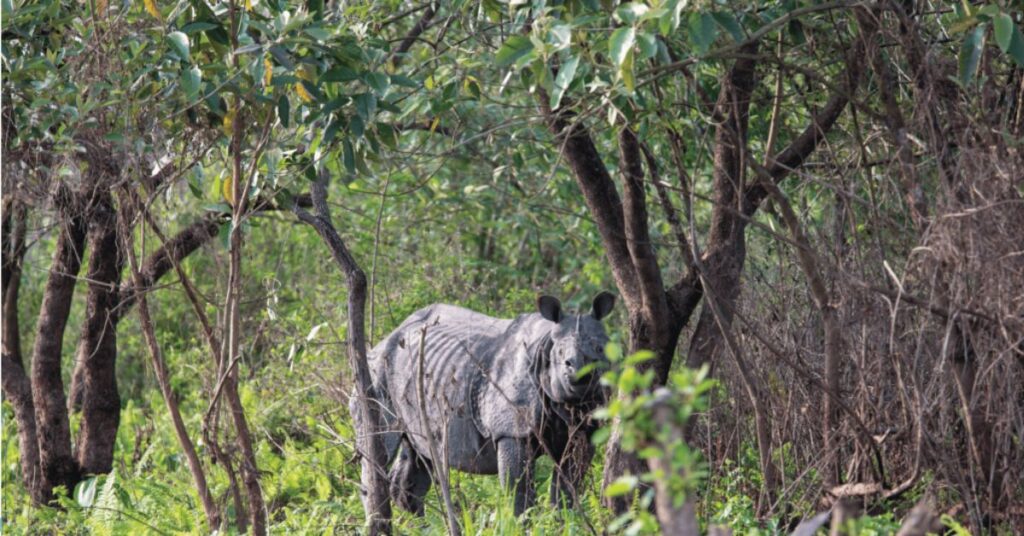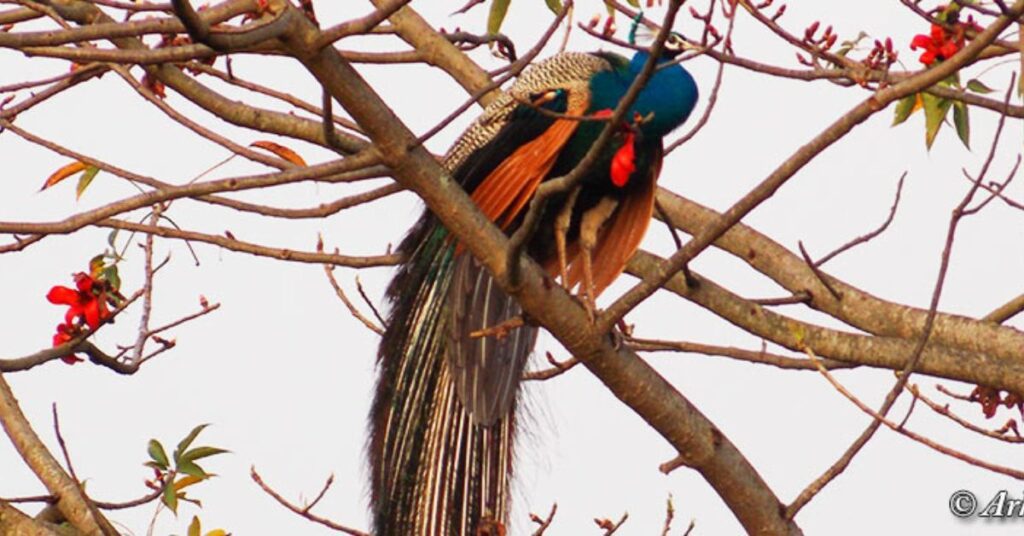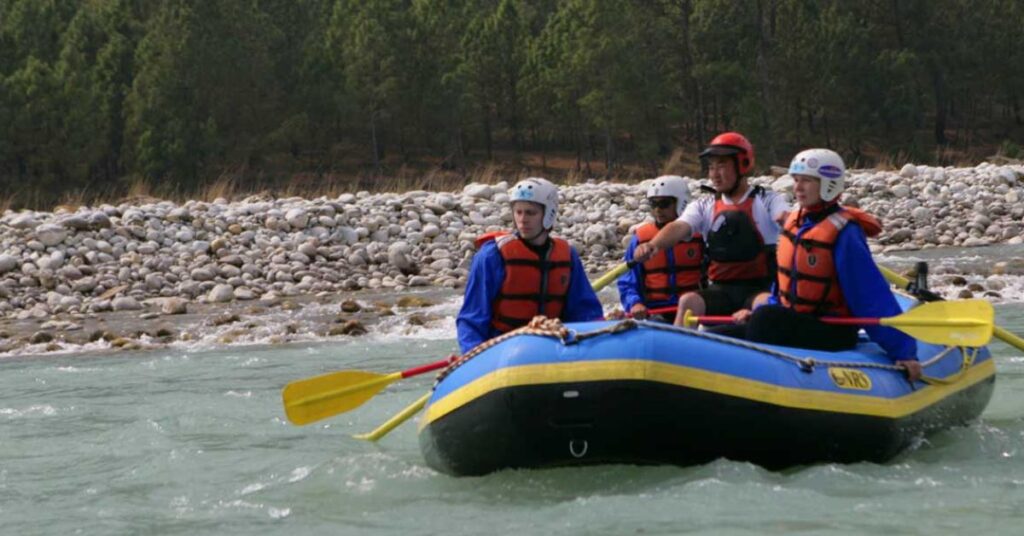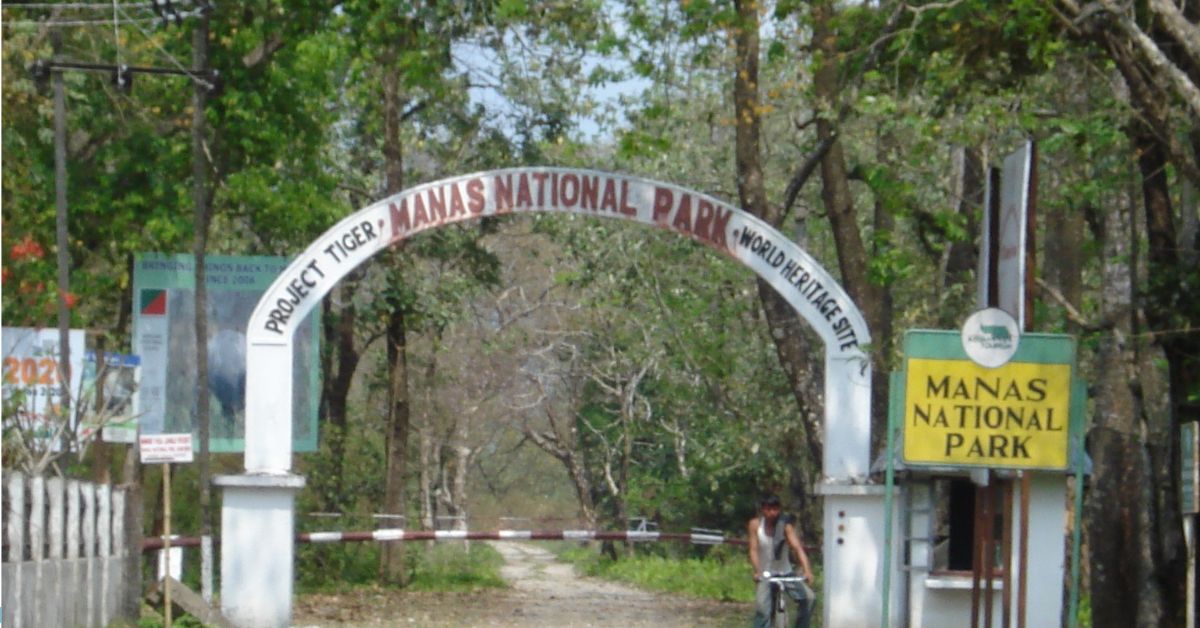Nestled in the heart of Assam, amidst the Eastern Himalayas, Manas National Park is a haven for wildlife and nature lovers. This UNESCO World Heritage Site boasts rich biodiversity and pristine landscapes. Home to majestic elephants, elusive tigers, and other rare species, Manas offers unforgettable wildlife encounters. Explore dense forests, meandering rivers, and experience the magic of Assam’s wilderness.
How to reach:
Air: The nearest airport is Lokpriya Gopinath Bordoloi International Airport in Guwahati, about 176 kilometers away. Taxis or buses can be hired for the 4-5 hour journey to the park.
Train: Barpeta Road is the nearest railway station, but Guwahati is a major railhead with better connectivity. Reach Guwahati by train and then proceed by road to the park.
Road: Manas is accessible by road from Guwahati via NH 27 and NH 31. State-run and private buses also operate between Guwahati and nearby towns, from where local transport can be arranged.
Best time to visit:
Winter (November to February): This is the most popular time to visit. Enjoy pleasant weather, ideal for wildlife spotting as animals are more active. The park remains open, allowing for full exploration.
Spring (March to April): Spring brings mild temperatures and blooming landscapes. Perfect for nature lovers and birdwatchers.
Post-Monsoon (October): The park reopens after monsoon with lush greenery. Pleasant weather and wildlife sightings make it a good choice for early visitors.
Attractions:
Wildlife Safaris:

Explore the heart of Manas National Park on thrilling wildlife safaris. Encounter majestic tigers, elusive golden langurs, one-horned rhinos, elephants, and the rare pygmy hog in their natural habitat. Guided jeep safaris offer close encounters, while elephant safaris provide a unique perspective through dense forests. These unforgettable experiences contribute to the conservation of this UNESCO World Heritage site.
Birdwatching:

Manas National Park is a haven for birdwatchers, boasting over 450 avian species. From the vibrant great hornbill to the elusive Bengal florican, bird enthusiasts can delight in spotting a diverse array of feathered creatures. The park is a crucial habitat for rare birds, offering birdwatchers a unique opportunity to observe these magnificent creatures in their natural environment.
River Rafting on Manas River:

Experience the thrill of river rafting on the Manas River, winding through the park’s scenic landscapes. This adventure offers not only excitement but also unique opportunities to spot wildlife along the riverbanks. Encounter elephants, deer, and a variety of birds as you navigate the river. Guided by experienced instructors, this thrilling experience showcases the beauty and biodiversity of the Manas River ecosystem.
Local Experiences:
Explore local villages: Experience the rich tapestry of Assamese culture, traditions, and daily life firsthand.
Witness artistry: Watch artisans create stunning handicrafts like woven textiles, pottery, and bamboo crafts.
Enjoy cultural performances: Immerse yourself in the vibrant world of Assamese folk dance and music.
Savor local flavors: Delight your taste buds with authentic Assamese cuisine, featuring fish curry, bamboo shoot delicacies, and rice-based dishes.
Indulge in tea: Visit nearby tea plantations and savor the taste of Assam’s world-famous tea.
Embrace nature: Enjoy river activities like fishing or boat rides, or explore the region’s natural beauty on nature walks.
Learn about sustainability: Visit organic farms and learn about sustainable farming practices.
Connect with the community: Engage with locals to understand their livelihoods and conservation efforts.
Celebrate local traditions: Attend vibrant festivals and cultural events to experience Assamese heritage firsthand.
Travel tips:
Best Season: Visit between November and February for pleasant weather and optimal wildlife sightings.
Permits: Obtain necessary permits for park entry through your accommodation or tour operator.Packing: Pack light, breathable clothing and comfortable walking shoes.
Health: Carry insect repellent, sunscreen, and any necessary medications.
Wildlife Etiquette: Respect wildlife and follow park guidelines during safaris.
Photography: Bring a camera with a zoom lens and respect photography rules.
Guided Tours: Consider a local guide for insights into wildlife and conservation efforts.
Safety: Prioritize safety by following guidelines and avoiding restricted areas.
Local Culture: Respect local customs and traditions.
Weather: Be prepared for sudden weather changes and check forecasts.
Transportation: Arrange transportation in advance, such as private taxis or organized tours.
Conclusion
Manas National Park, a UNESCO World Heritage Site, is a haven for wildlife and nature enthusiasts. This Assam treasure boasts rich biodiversity, with dense forests, meandering rivers, and diverse wildlife. Encounter majestic tigers, graceful elephants, and a vibrant birdlife. Beyond wildlife safaris, explore local villages, enjoy serene boat rides, and contribute to conservation efforts. Experience the magic of Assam’s wilderness and gain a deeper appreciation for its ecological and cultural richness. Plan your unforgettable journey to Manas National Park with Xplro.com.
FAQs
What makes Manas National Park famous?
- Manas National Park is celebrated for its diverse wildlife, including Bengal tigers, Indian rhinoceroses, elephants, and over 450 bird species. It holds UNESCO World Heritage status and is culturally significant.
How can I travel to Manas National Park from Guwahati?
- The most common route from Guwahati to Manas National Park is via road, taking approximately 4-5 hours on NH 27 and NH 31. Alternatively, you can take a train to Barpeta Road Railway Station and then a short drive to the park.
When is the best time to visit Manas National Park?
- The ideal time to visit is from November to February, during the winter months, when the weather is pleasant for wildlife safaris. The park is closed from June to September during the monsoon season.
Are safaris available in Manas National Park?
- Yes, Manas National Park offers jeep safaris and elephant safaris for wildlife viewing. These guided tours provide opportunities to see tigers, rhinoceroses, elephants, and other wildlife.
Do I need a permit to visit Manas National Park?
- Yes, visitors require permits to enter the park, which can be obtained through authorized accommodations or tour operators. It’s advisable to arrange permits in advance.
What should I wear during safaris at Manas National Park?
- It’s recommended to wear light, breathable clothing suitable for tropical weather. Long sleeves and pants are advisable for protection against insects and sun exposure. Comfortable walking shoes or boots are also recommended.
Can I stay inside Manas National Park?
- Yes, there are accommodations available within the park, including forest lodges and tourist cottages. Additionally, nearby resorts and lodges offer comfortable stays.
Is photography allowed in Manas National Park?
- Yes, photography is permitted in designated areas of the park. However, certain restrictions may apply, particularly when photographing sensitive wildlife species. Always follow guidelines provided by park authorities and guides.
What activities can I enjoy besides safaris at Manas National Park?
- Apart from wildlife safaris, visitors can engage in birdwatching, river rafting on the Manas River, nature walks, village visits, and cultural experiences. Boat rides and visits to the Manas National Park Museum are also popular.
Are there cultural experiences near Manas National Park?
- Yes, visitors can explore nearby ethnic villages, witness traditional dance performances, participate in handicraft demonstrations, and savor authentic Assamese cuisine. These experiences offer insights into local culture and traditions.
What safety precautions should I take at Manas National Park?
- Follow safety instructions provided by guides and park authorities during safaris and outdoor activities. Respect wildlife and maintain a safe distance. Avoid venturing into restricted areas or straying from designated paths.
How does visiting Manas National Park contribute to conservation?
- Visiting Manas National Park supports conservation efforts by raising awareness about biodiversity conservation, contributing to local livelihoods through eco-tourism, and promoting sustainable tourism practices. Visitor fees and permits also fund conservation initiatives within the park.






